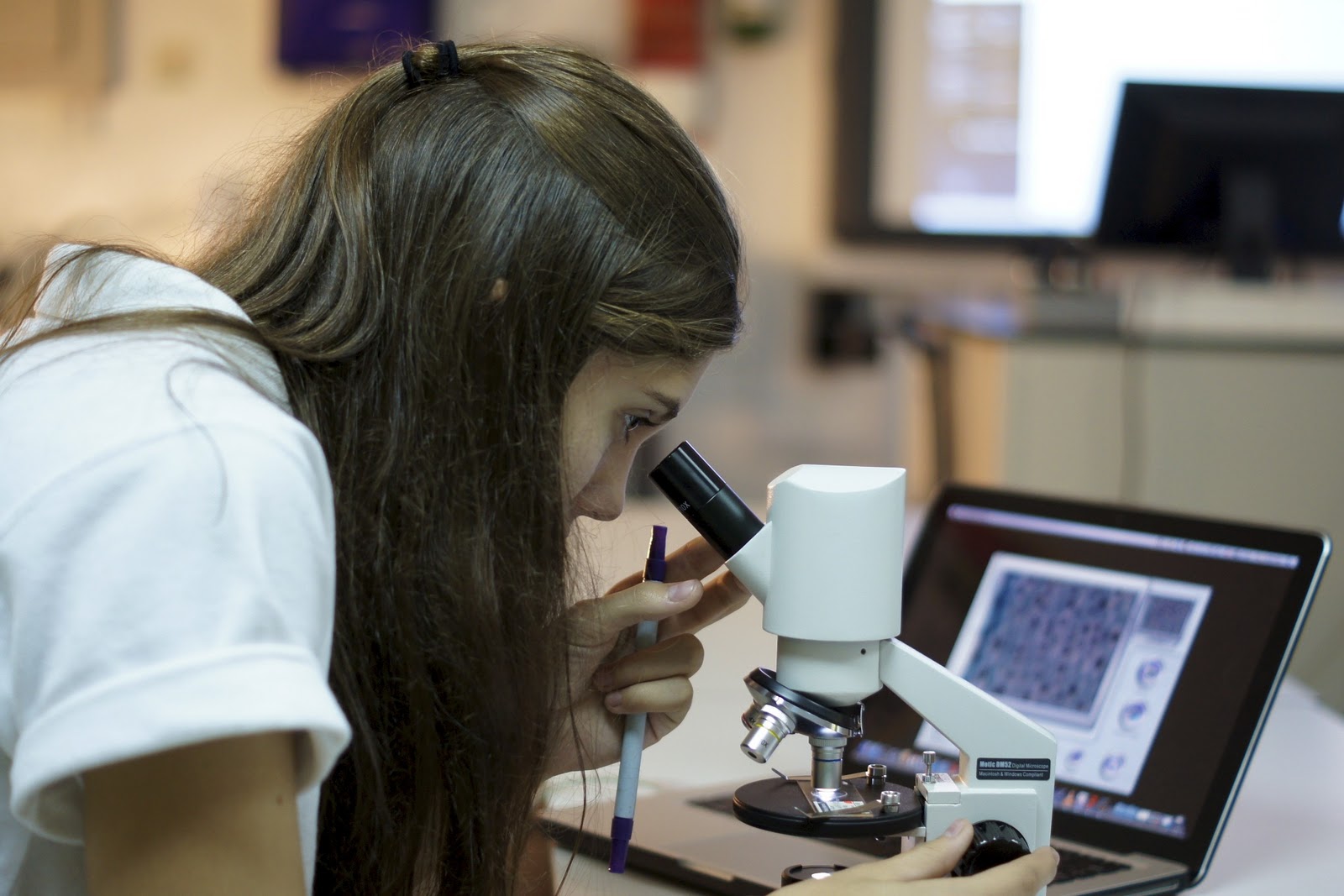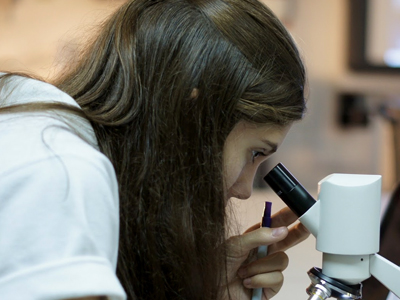 Microscopes are nothing if not a symbol of scientific progress. If someone is using a microscope, odds are they’re in the midst of some important work.
Microscopes are nothing if not a symbol of scientific progress. If someone is using a microscope, odds are they’re in the midst of some important work.
And yet Mike Wiley, U of T anatomy professor, found that microscopes were a real hindrance for his first-year histology courses, which used them to study slides for organ and tissue structure.
“I quickly discovered that students really were not engaging with the microscope exercise,” Wiley says.
He explains that few students saw themselves going into a medical career that would deal with microscopy, so they were less than enthusiastic about that part of the lab. In addition, Wiley points out that microscopes create a natural barrier between the student and the teacher. It’s hard for a student and TA to communicate what they’re seeing, what they’re supposed to be seeing, and what it all means—not to mention doing all that with old and broken down equipment.
Luckily, Wiley had a plan to eliminate these barriers. He managed to find a company called Aurora that was creating digitized versions of microscope slides for doctors. Not only were they high resolution, they could be accessed online, and they could be annotated. In other words, it was perfect for teaching. With Wiley’s input, they agreed to shift part of their focus to education.
That’s where the ITIF grant came in. Wiley used the grant to get his teaching slides scanned, and to develop a teaching application. After a few years of debugging, that application—Aurora mScope—went online, accessible to students through U of T’s Learning Portal (Blackboard).
“Now, instead of students attending a lab with a set time looking at slides, they can go online and look at slides anywhere,” Wiley says. “And we still have the ability for one-on-one time in the lab with the microscope, if the student is interested.”
But the features Wiley managed to implement have a lot of advantages over the real thing.
The digitized slides are arranged into specific lessons for students on the Portal. They can change magnification and scan the slides like on a real microscope, with fast loading times making the process nearly seamless. There’s a thumbnail map in the corner at all times to help with orientation, so no one gets lost in a slide. The slides are all annotated, to help explain what’s worth looking out for.
It’s also easy to save photos of the slides for further study offline. And on top of all that, there’s a collaborative mode: up to four students can interact with the same slide at the same time, as a way to simulate group study. This makes it really useful for distance learning.
Surely there must be some downside to all this, right?
“Well, you can’t simulate the act of tuning the focus of the microscope,” Wiley says. “You can’t simulate the use of the actual microscope as a tool. But that’s not necessary really. Most students won’t go on to use microscopes, and if they do, they get their training later on.”
For Wiley, there’s no doubt that mScope has been invaluable for teaching this course. The biggest advantage is the annotations, which he made sure were easy to change.
“If a student has a question about the slide, I can sit down at the next computer, during class, and clarify the annotations instantly,” Wiley says.
Wiley says the students are very pleased with it, seeing as they don’t need to use up time to go into the lab anymore. And, after having helped develop the main teaching tool for the course, Wiley is pleased too.

